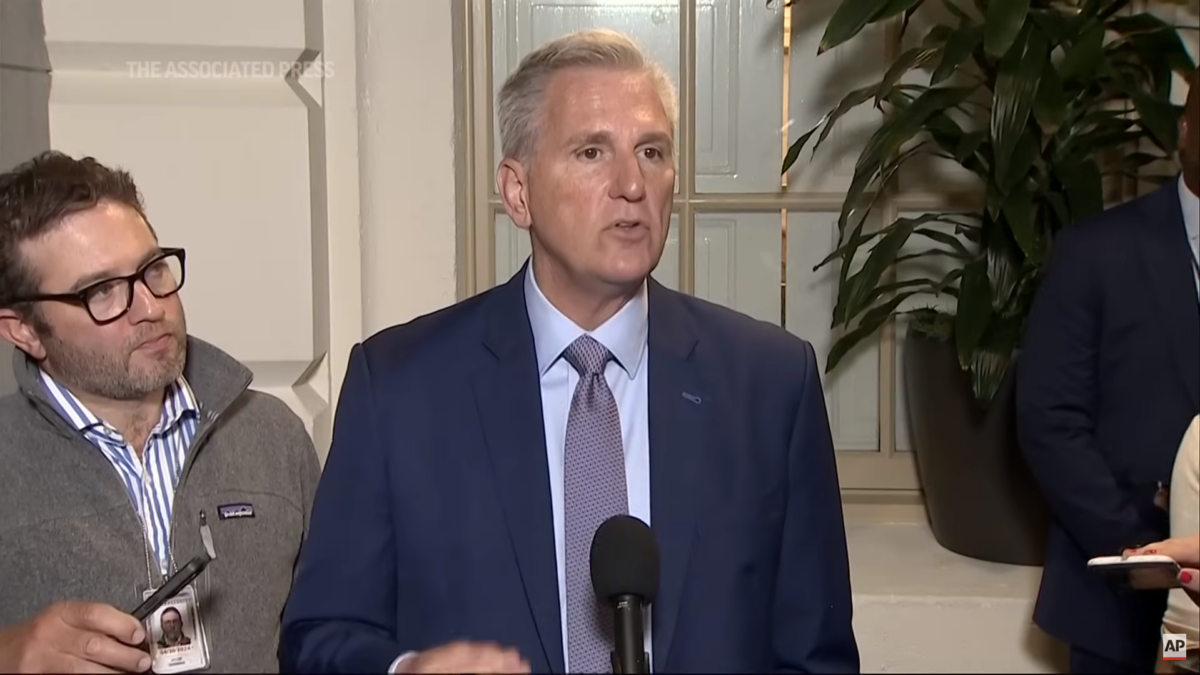
Several state and local government employee retirement systems around the nation are seriously underfunded. Politicians overpromised retirement benefits to government workers while not collecting enough in employee contributions or taxes, then papered over the shortfall by projecting overly optimistic investment returns akin to an official Ponzi scheme.
But these same irresponsible politicians have figured out a way to bail out their government worker pension systems: forcibly enlist the general public into the underwater systems, taking their money, making them dependent on government, and compelling voters to care about rescuing those retirement systems.
California Gov. Jerry Brown just signed Senate Bill 1234 into law, a bill that makes retirement savings accounts mandatory for any business with more than four employees. Instead of requiring businesses to offer a 401(k) plan through a financial services firm, the law requires a 3 percent payroll deduction with the money going to the state for safekeeping—unless the employee opts out. It’s estimated that 7.5 million private-sector workers in California will be conscripted into the state-run system.
The money taken will be managed by California Public Employees’ Retirement System, otherwise known as CalPERS, the nation’s largest public employee retirement system with 1.8 million members. California’s state and local government retirement systems are facing a funding gap of $991 billion, according to Pension Tracker, an initiative of the Stanford Institute for Economic Policy Research.
Other states have already passed or are considering similar plans. Unremarkably, they all share one thing in common: massive unfunded pension liabilities:
- Illinois’ unfunded pension liabilities are $77,822 per household, the second-highest in the nation;
- California’s unfunded pension liabilities are $77,700 per household, the third-highest in the nation;
- Connecticut’s unfunded pension liabilities are $72,862 per household, the fourth-highest in the nation;
- Massachusetts’ unfunded pension liabilities are $60,652 per household, the sixth-highest in the nation;
- Oregon’s unfunded pension liabilities are $45,840 per household, the tenth-highest in the nation;
- Maryland’s unfunded pension liabilities are $44,038 per household, the thirteenth-highest in the nation.
See the pattern? Minnesota is studying the idea of forcing employees to contribute to the state pension system. They have the eighteenth-highest per household pension debt liabilities, at $36,584. To his credit, New Jersey Gov. Chris Christie vetoed a plan much like California’s in January, opting instead to encourage businesses to set up private plans.
Please Bail Out Our Mess
Money in government hands is flexible. Forcing private-sector employees to be part of state retirement systems will open up a flood of cash, delaying retirement system insolvency. Further, making millions of voters part of a state-run retirement system will force them to care about the financial health of those systems, potentially increasing public support for tax increases to boost their weak balance sheets.
Government pension boards are notoriously political. CalPERS, with $300 billion in assets, holds tremendous sway with the companies in which they are invested, as is also the case with California’s blue state counterparts. This financial clout is used to promote the liberal elite’s political priorities, bending corporations to their will at the risk of losing investments. Adding billions more in assets from millions of additional workers will only strengthen this unseen and poorly understood politically correct muscle.
Seeing an opportunity to increase progressive power, the Obama administration recently announced a new labor rule to nudge states and local governments into offering government-run retirement plans for private-sector workers.
It Won’t Stop There
On top of all of this, there’s one more predictable liberal step to come: taxing middle-class retirement savings in the name of reducing income inequality. On the eve of the passage of California’s forced retirement savings plan, the retirement board suggested that a 3 percent payroll deduction wasn’t enough—10 percent was the right amount.
But groups representing lower-income groups cried foul, saying they could only afford 3 percent. The solution to this inequity is inevitable: place a surcharge on middle-class retirement payroll deductions, and divert it into the retirement accounts of the working poor.
Think it won’t happen? Take a look at your utility bills. Chances are you’ll see that, at the behest of the state, utility companies charge you a little extra so they can provide service to select others at a steep discount—a form of income redistribution that doesn’t even show up as taxes or government expenditures.
Beware of liberal politicians demanding your money to help you—it will only end badly.









